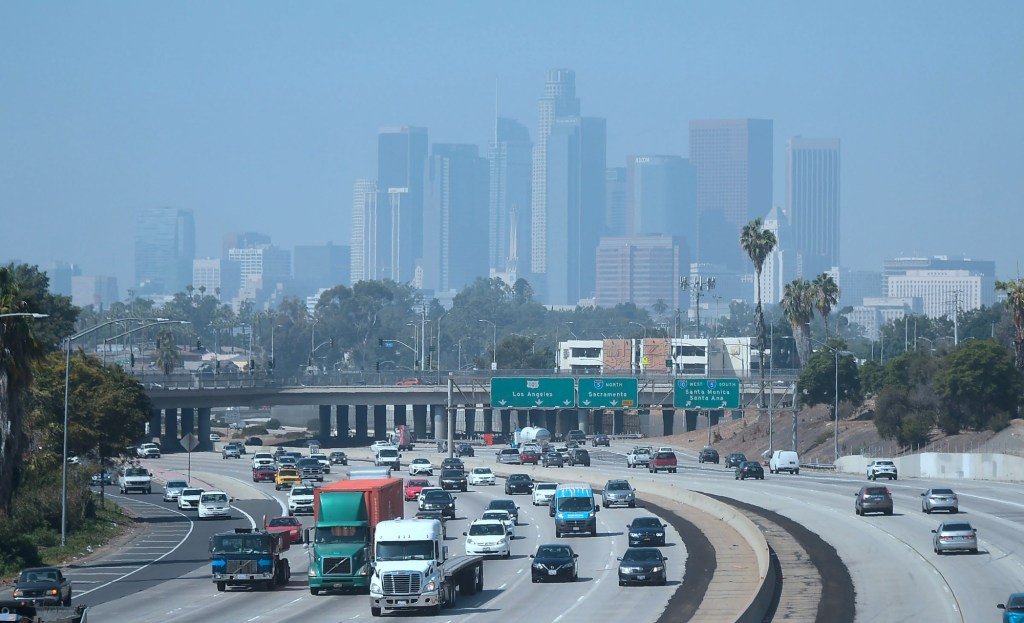California’s Struggle to Clean the Air: A Future at a Crossroads
In the heart of Anaheim, surrounded by gleaming electric vehicles, Christopher Grundler, deputy executive officer of the California Air Resources Board (CARB), stood before an audience. The optimism in his voice contrasted sharply with the backdrop of recent regulatory upheaval. “This president, this Congress, will not kill the electric car,” he confidently proclaimed. Yet, for the millions of Californians breathing some of the nation’s most polluted air, the struggle for clean air has entered a new battleground.
The Federal Reversal and Its Implications
For nearly six decades, California has wielded its unique authority to set strict emissions standards under the Clean Air Act. However, recent actions by Congress and the Trump administration have threatened to dismantle these hard-fought measures. In a striking legislative maneuver, Congress revoked the state’s right to enforce seven critical regulations aimed at phasing out gas-powered vehicles by 2035 and curtailing diesel trucks. This loss not only undermines California’s aggressive climate agenda, it poses an existential threat to the health of its residents.
“These rollbacks are not just bureaucratic changes,” said Dr. Linda Choi, an environmental policy analyst. “They represent a tangible risk to public health, especially in vulnerable communities that bear the brunt of air pollution.” A recent study from the California Institute of Public Health estimated that eliminating these regulations could lead to an additional 5,000 premature deaths annually from respiratory diseases.
California’s Response: An Invitation to Innovate
Faced with this federal setback, CARB leaders are pivoting toward voluntary agreements and incentives to spur the adoption of electric vehicles (EVs). Governor Gavin Newsom has directed CARB to develop a new zero-emission vehicle mandate, which may help to reinvigorate California’s ambitious climate goals—pending potential changes in federal leadership.
A Creative Path Forward
- Development of New Standards: Experts suggest that California should not shy away from crafting alternative emissions standards, as federal constraints only limit duplicative waivers.
- Regulating Pollution Hotspots: Areas like ports and highways, identified as “pollution magnets,” could be targeted for stricter regulations.
- Broadened Incentive Programs: Fund allocation for EV incentives is crucial, particularly in light of the capped Greenhouse Gas Reduction Fund.
“California still has the authority to innovate within its own framework,” said Dr. Marcus Lee, a climate policy expert. “The state needs to think outside the box—offering tax incentives for electric vehicle purchases and exploring grants for charging infrastructure could make a significant difference.”
The Public’s Unease: Economic Concerns and Political Fallout
While leaders at CARB remain optimistic, public sentiment is shifting. Many Californians and even some Democrats in the state legislature have expressed concerns over rising gasoline prices attributable to stringent air quality regulations. Air Resources Board Chair Liane Randolph acknowledged the need for discussions, stating, “There’s no one strategy that’s going to work. We’re going to need a suite of different things.”
The pushback extends beyond mere consumer apprehension. Local agencies are grappling with their own internal strife. For instance, the South Coast Air Quality Management District recently rejected a pivotal rule aimed at transitioning local heating systems to zero-emission technologies, citing economic repercussions. This struggle underscores the complex relationship between regulatory ambitions and practical implementation.
A Delicate Balancing Act
This discord has led to heightened scrutiny regarding the regulatory power of agencies like CARB. Critics argue that an unelected board should not possess the authority to enforce such sweeping changes. “The stakes here are incredibly high,” stated John Dunlap III, a former CARB chair. “California has one foot on the accelerator and the other on the brake, and it risks grinding to a halt.”
Voices from the Ground: What Residents Are Saying
On the streets of Los Angeles, residents of color living near busy highways and ports recount their daily battles with air pollution. “Every time I step outside, I feel it in my lungs,” said Maria Gonzalez, a community activist. “Management must be held accountable for the air we breathe. The fight isn’t just about cars; it’s about our health.”
With lawmakers and environmentalists keenly aware of these sentiments, there’s a growing push to prioritize environmental justice. Adrian Martinez, an attorney from Earthjustice, believes that state and local authorities will need to catalyze change: “We just have to go it alone. Federal support is wavering, but local actions can still yield impactful results.”
The Road Ahead: A Collective Commitment
Despite the tumultuous landscape, California’s journey toward cleaner air remains essential for its residents. From exploring innovative regulatory practices to engaging local communities, the path forward must blend ambitious policy with grassroots advocacy. Environmental justice, once a marginalized discussion, has now taken center stage in California’s climate narrative.
As Christopher Grundler left the showcase last week, he was met with a fierce determination from advocates and residents alike. “We cannot afford to retreat,” he stated, embodying the resilient spirit of a state that has weathered storms, both political and environmental. The drive for clean air will persist, but achieving it will demand collective creativity, steadfast advocacy, and perhaps most importantly, unity.





